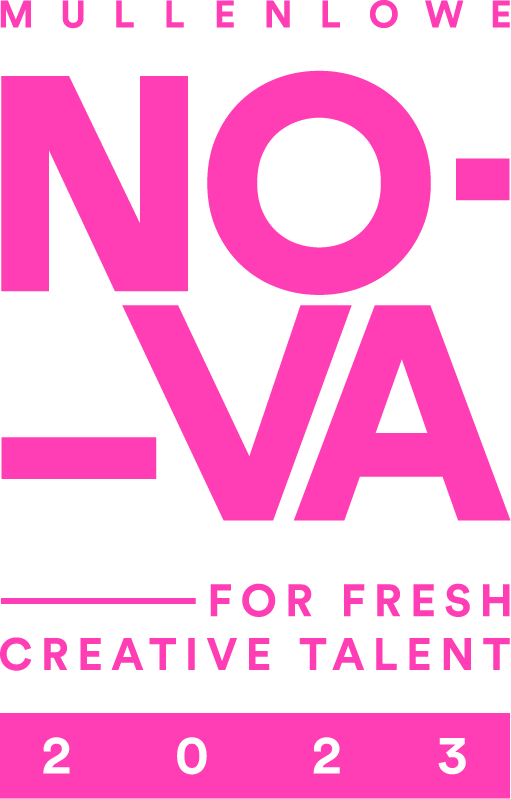If A Young Creative Falls In The Forest, Do They Make A Sound?

With so much creativity happening all about, how can we surface talent so that it gets the best possible opportunity to succeed?
MullenLowe Group, the excellent people who send my paycheck, are behind a thing called the MullenLowe NOVA Awards, a series of awards celebrating some of the most outstanding emerging talent from Central Saint Martins. As the awards reach their conclusion in the coming weeks, it felt like a good time to think about the role awards at student level play in a world where the barriers to creative expression have become so much dust. It starts, as so much else, with a paradigm changing technology.
If you’ve been to Tate Modern, or another contemporary art gallery in the last 20 years or so, you’ve seen first hand the impact of mass creativity. When affordable cameras first put photography into the hands of the masses, the impact on the millenia-old tradition of portraiture was immediate. To all intents and purposes, when anyone could have a picture of grandma, there was no artistic value in having a picture of grandma, and it opened up the world of art to a series of hugely important conceptual leaps.
Painters in the Western tradition went from being jobbing painters of relatives and the land they owned and began to develop all sorts of crazy notions, from the New Romantics to the Impressionists, from Cubism to Futurism. These conceptual developments took us onward to the excitingly rich art world we inhabit today where institutions like Tate provide the conditions for Abstract Expressionism to rub shoulders with Modernism, Minimalism to buddy up alongside Post Digital Art, Street Art to snuggle Afro Futurism. When technology changed, the value transaction at the heart of the art world changed with it and so too did our ideas about creativity; photography caused a course correction in high culture, whilst democratising the very nature of the image. It was pretty profound, and we’ve been through something similar recently.
Time was, you could be a viral success almost accidentally. Your band, having recorded its garage practice sessions, could grow an audience on MySpace, or Bandcamp and that alone would set you on a path to stardom. You could film a few videos of yourself playing the guitar, and become a global megastar (looking at you Justin Bieber), your creative gifs could catch the eye of a tumblr crowd and flex into a wildly lucrative commercial career, hells, your witty tweets could land you a book deal. That was back in the Before Times, when the ‘gram hadn’t made us all pose stupidly in public, and TikTok hadn’t messed with our attention sp…..where was I? Anyway. A lot has changed since then.
Now, if any number of sketchy looking marketing data sites are to be believed, somewhere between 55% and 87% of all the 1 billion or so people on TikTok are now not just watching, but actually making actual TikToks (google this – the numbers are all over the place, it may be best just to say there’s a lot of making probably going on). And over on on YouTube, people are apparently busy watching 1 billion hours of video daily, millennial instagrammers are busily curating their grids, Twitch and Discord users are streaming, Substackers are newslettering, pinners are pinning on Pinterest, the Snap crowd is doing what it does, Clubhouse is chatting away, and those old favourites, tweeters and Facebook posters are still at it. As with the advent of mass photography, as the tools needed to make quality content have become democratised, the value equation at the heart of the artworld has once again changed, and the markers of quality that help us identify future talent have become harder to identify.
Frankly, it would be nothing short of a miracle if, in amongst the hubbub, we were able to identify and surface major new creative talents, whilst for creatives themselves the economics of trying to be seen amidst the algos must be worse than the famously terrible economics of drug dealing. As a society that we know benefits from the time and space that creatives give to thinking about the world, and as creatives needing to pay the rent, we need help to find the people thinking the new thoughts. We’ve always had art schools, but perhaps we now need more.
Traditionally, one of the roles of art schools globally has been to help surface the ‘new thoughts’ kind of talent, and that has been a remarkably successful approach. Where it has hit something of a wall in the new media environment is that unless the work that the students produce is immediate, visceral, and viral, in the happiest, digital sense, the fractured attention span of the world’s social media users hits hard at their chances of surfing the algorithm to career success. That’s where student focused prizes come in.
Awards and prizes, like the MullenLowe NOVA Awards, which I am grateful to have judged last year and which this year reaches its 10th anniversary, allow institutions like Central Saint Martins, (who have created the Awards in exclusive partnership with MullenLowe Group), to curate their student body for the wider world by filtering their work through the opinions of a panel of experts from the creative world. The combined endorsement of academia and the commercial world helps voices who might otherwise remain overlooked to be heard by a wider audience, whilst the cash prize helps winners to buy a little breathing space to develop their practice, as last year’s MullenLowe NOVA Awards overall winner, and winner of the YourNOVA ‘People’s Choice’ award, artist Sandra Poulson has said: “Winning these awards was unprecedented in the projection of my work to a wider audience. It allowed the conversations of the work to be accessed by so many people, bringing many opportunities that are helping me set a foundation for my practice”.
This year’s MullenLowe NOVA Awards are currently underway. Out of 1,300 graduating students, just six Awards will be given to those students whose work represents truly creative thinking and execution. Nominated work can be viewed at the Central Saint Martins Graduate Showcase and winners will be announced at an online ceremony in August. Please do join us in celebrating these uniquely talented creatives and beyond this, perhaps think about whether the cause of student awards is something that can be championed in your own organisation.
In these surprising times, for me at least, the powerful guidance that talented creators give us is incredibly valuable, but it is only with all of our support that we enable them to be heard above the noise.
Hannah Hayes-Westall, Strategy Director, MullenLowe London
This article was originally published on LBBO








